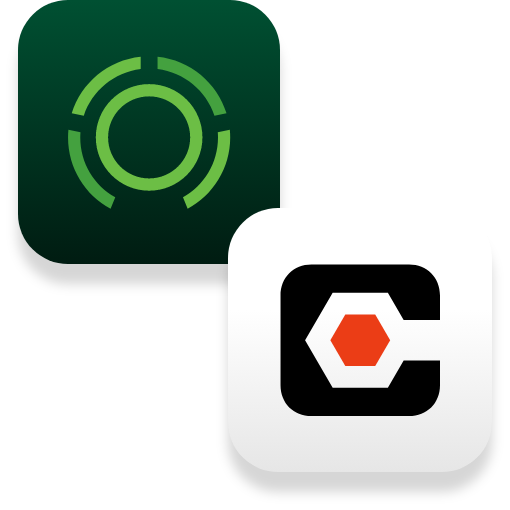
In the ever-changing construction industry, where progress hinges on precision and efficiency, the power of integration is a game-changer.
Today, we’ll explore the ins and outs of construction technology integrations, shedding light on their benefits and impact on the construction industry.
Elevating Construction with Integrations
The marriage of technology and integration is revolutionizing the way businesses and firms operate, particularly in the construction sector.
Construction technology integrations merge various software tools used in the construction industry and enable multiple software systems to work together cohesively, sharing data, functionality, and processes.
For construction businesses, these integrations offer a multitude of benefits. Integrated applications enforce accountability, transparency, and real-time collaboration, fostering a more productive work environment. By eliminating duplicate data entries, reducing errors, and enabling automation, businesses save on time and costs while gaining a competitive edge.
Let’s take a look at how.
Streamlining Workflows for Better Efficiency
Technology integrations create a seamless flow of information across different software applications, eliminating the need for manual data entry and repetitive tasks. This approach empowers construction professionals to access real-time data, collaborate effectively, and make informed decisions, ensuring both accuracy and consistency.
As a result, discrepancies are caught early, adjustments are made swiftly, and the potential for costly rework or delays is significantly diminished.
Accountability and Transparency
Integrations leave a digital trail of actions and decisions throughout the construction process. They enable real-time tracking of project milestones, tasks, and changes, ensuring that every action is recorded and accessible to all stakeholders. This transparency fosters a culture of responsibility as team members can easily trace the progress of tasks, identify bottlenecks, and address any discrepancies promptly.
Real-Time Collaboration
The seamless connection between various platforms allows for instant sharing and updating of data, progress, and insights between on-site and off-site teams.This real-time communication facilitates quicker decision-making, enhances project visibility, and minimizes delays, ultimately driving productivity to new heights.
Empowering Decision-Making with Accurate Data
Integrations provide decision-makers with real-time insights, eliminating reliance on outdated or conflicting data sources and leading to more precise project planning, resource allocation, and risk mitigation strategies.
The Competitive Edge
In the construction industry, maintaining a competitive edge is invaluable. Construction technology and platform integrations provide firms an advantage by streamlining operations, enhancing communication, and improving the overall decision-making process. This results in faster project completion, cost savings, and the ability to offer more competitive bids in the market.
The TrueLook Advantage: Autodesk and Procore Integrations
In this section, we’ll explore how TrueLook’s integrations with Autodesk and Procore exemplify the benefits of integrating software for construction companies.
Procore Integration
TrueLook’s integration with Procore provides access to jobsite data and imagery within a single application, eliminating the need to navigate elsewhere.
- View and control TrueLook Cameras as an Embedded Experience within Procore.
- Share photos from TrueLook to Procore, enhancing collaboration across teams.
- Set up automatic sharing of time-lapse photos and photo albums to easily distribute project updates.
- Create and assign Requests for Information (RFIs) within TrueLook, sending them directly to Procore for efficient resolution.
Autodesk Integration
TrueLook’s integration with Autodesk offers an efficient way for users to maximize the visibility of their jobsites. With this integration, you can:
- View and control TrueLook Cameras as an Autodesk Insights Card.
- Share photos and videos from TrueLook to Autodesk to collaborate without having to log into another platform.
- Centralize project data, minimizing the time spent switching between tools.
- Organize project-specific photos in folders for easy access.
Success Story:
TrueLook x Procore Integration
Learn how Harper General Contractor’s boosted stakeholder engagement by enabling 1-Click Access to TrueLook within Procore.

Social Sharing
TrueLook’s commitment to streamlining your firm’s workflow extends beyond construction tech spheres. The platform’s connection with Facebook and LinkedIn enables images to be shared directly from the TrueLook Platform. This an help keep your followers engaged and excited throughout the project rather than just when it’s announced and when it’s completed.
Embrace the Future: Integration in Your Hands
In a constantly changing landscape, embracing integration isn’t just prudent; it’s a necessity.
TrueLook’s integrations with Autodesk and Procore are created to help your firm in the journey toward efficiency, precision, and collaboration.As you look towards the future of your construction company, consider the impact that an integration could have.
Learn More About How TrueLook Integrates & Get Started
Eager to learn more about TrueLook’s integration capabilities? Click the links below to explore how they work and see the benefits they bring.
TrueLook Integrations: Explore Now
Harper Case Study: Read Success Story
Are you ready to streamline your day-to-day workflows? Whether you’re already a Procore or Autodesk user or simply have questions, click the link below to get started today!

